Water and sewer protection zone: regulatory requirements
How big is the protection zone of water supply by SNiP? How far from the central sewage line can one build? What should be the distance from the septic tank to other structures on the site? Let's try to answer these questions.
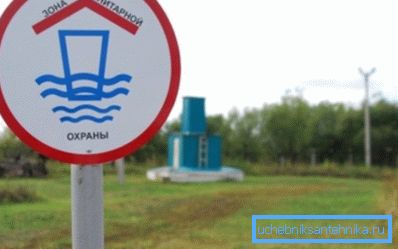
Causes of limitations
To begin, let's think about why we need security zones for water supply and sewage.
There are several reasons for their existence.
- During construction, engineering networks may be damaged directly. (for example, when operating an excavator) or when shedding soil in a pit.
Note: by themselves, the movement of construction equipment over a pipeline 1 to 1.5 meters deep is also not so safe for it. Broken sockets of cast iron water pipes or deformation of polyethylene pipes, reducing their clearance, are often a direct consequence of a significant load on the soil above them.
- Depressurization of engineering communications, in turn, it can also cause damage to neighboring buildings, washing away the soil under their foundations.
- Finally, in the case of sewage, sanitary and epidemiological considerations are also important.. Entering into the well or the well with the drinking water of E. coli from an untight joint of pipes or from a septic tank filtering well can create a serious threat to the health of inhabitants of nearby structures. In part, this also applies to water pipes: depressurization under certain conditions can lead to pollution of drinking water.
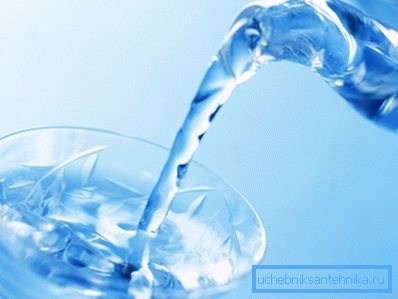
Regulatory requirements
The width of the protection zone of the water supply and sewage systems is mentioned in several national regulatory documents. In the best national traditions, the contradictions in them leave room for different interpretations of the requirements.
SNiP 2.04.02-84
The document on the design of external water supply networks establishes the following dimensions of the protection zone for water lines laid across undeveloped areas:
| Conditions | Security zone, meters |
| Dry soil, diameter up to 1000 mm | ten |
| Dry soil, diameter over 1000 mm | 20 |
| Wet soil | 50 |
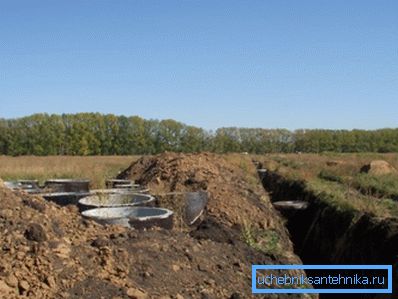
However: in built-up areas, the protection zone of the main water supply system can be reduced as agreed with the sanitary-epidemiological service.
What are the requirements for the protection zone?
- Within its limits, the presence of sources of pollution of groundwater and the ground itself is unacceptable. The list includes landfills, toilets, manure storage, etc. Where the security zone is adjacent to polluted areas, only plastic and steel (i.e. devoid of detachable connections) pipes should be used for water pipes.

- The laying of water pipelines on the territory of industrial zones, agricultural enterprises, cattle cemeteries, cemeteries, irrigated fields, filtration fields of autonomous sewer systems is prohibited.
SNiP 2.07.01-89
The second document is devoted to planning the development of villages and cities. Let us single out the key moments from its text in the field of interest to us.
The maximum sizes of sites for drinking water treatment plants with their different productivity are taken equal to:
| Productivity, m3 / day | Area, ha |
| 800 and less | one |
| 800 - 12000 | 2 |
| 12,000 - 32,000 | 3 |
| 32,000 - 80,000 | four |
| 80000 - 125000 | 6 |
| 125,000 - 250,000 | 12 |
| 250000 - 400000 | 18 |
| 400,000 - 800,000 | 24 |
But the instruction on the allocation of space for sewage treatment plants for sewage:
| Productivity, m3 / day | Area, ha |
| 700 or less | 0.5 |
| 700 - 17000 | four |
| 17,000 - 40,000 | 6 |
| 40,000 - 130,000 | 12 |
| 130,000 - 175,000 | 14 |
| 175,000 - 280000 | 18 |
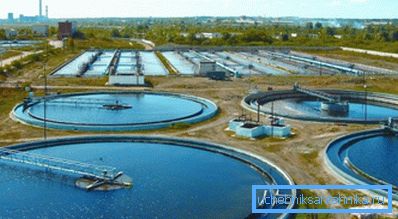
Important: for the local sewage system, the maximum size of the site for the treatment plant and its sanitary protection zone is 0.25 ha.
To place engineering networks within the settlement should be mainly within the limits of roads and streets. At the same time laying of the sewerage and water supply is recommended to be carried out within a dividing strip between lanes. Under the pavements, engineering networks can also be laid, but only in trays or tunnels.
On the streets without dividing lanes, engineering networks can be laid directly under the carriageway - again, in canals or tunnels, allowing, if necessary, to repair or replace without opening the roadway.
If you do not comply with this rule, the price of any emergency or scheduled repair will increase dramatically, both due to the need to restore the road flooring and due to the forced re-direction of traffic flows for the duration of the work.
With a road width of more than 22 meters, the water supply should be pulled on both sides. In difficult ground conditions (in particular, on permafrost or on subsiding soils), water supply lines should be laid in canals or tunnels, regardless of other factors.

How many meters of a security zone of a water supply system and the sewerage cannot be built up with other constructions? To this question, the SNiP provides a completely unambiguous and detailed answer, even if it is in some contradiction with the previous regulatory document.
| Objects | Minimum distance, meters | |
| Plumbing and pressure sewage | Gravity drainage (including stormwater) | |
| Foundations of buildings for any purpose | five | 3 |
| Foundations of fences, supports of communication lines, overpasses | 3 | 1.5 |
| 1520 mm wide railway gauge axis | four | four |
| The axis of the narrow gauge railway and tram rails 750 mm wide | 2.8 | 2.8 |
| Edge of the road (roadway) | 2 | 1.5 |
| Foundations of power transmission towers with voltage up to 1 kV, contact networks of electric transport, street lighting | one | one |
| Foundations of power transmission towers with voltage of 1 - 35 KV | 2 | 2 |
| Foundations of power transmission poles with voltage over 35 KV | 3 | 3 |
Thus, in the test of the document it is expressly stated that the maximum security zone of the water supply networks within the settlement is 5 meters. It is precisely this value that is worth being guided by if you are planning to build in the territory of a city or village.

The authors of the SNiP make some rather curious notes to the table.
- The minimum distance between the household sewage whip and the asbestos-cement water supply pipe is still the same 5 meters.
- For cast-iron water pipe with a diameter of 200 mm, this distance is reduced to one and a half, and with a diameter of more than 200 mm - to three meters.
- Polymeric water supply of any size can be laid in one and a half meters from the sewer.

- The distance from the water supply to the drainage or storm water should not be less than 150 cm, regardless of the material and diameter of the pipelines.
- The power cables can be half a meter from the water supply, and the heating mains or tunnels for any purpose - in one and a half.
SNiP 2.04.03-85
The last document we are interested in regulates the construction of external sewer networks and facilities. Of course, we are interested in, first of all, the sizes of sanitary protection zones set by SNiP, and in a fairly narrow area.
Let us single out those points that you should be guided by when building your own autonomous sewage system and local treatment facilities:
- The protective zone of the septic tank is 5 meters.
- For the filter well, it increases to 8 meters.
- The filtration field with a capacity of no more than 15 cubic meters per day requires the creation of a 15-meter sanitary protection zone.
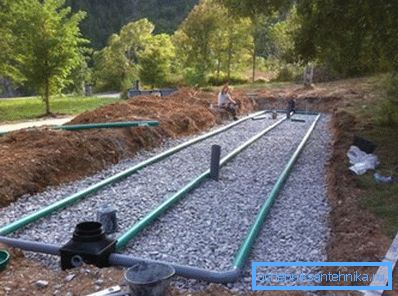
- Finally, filter trenches and sand and gravel filters limit the building up to a minimum distance of 25 meters.
Conclusion
We hope that the above regulatory requirements and the list of construction governing documents will help the reader in creating his own projects. In the video in this article you can find additional thematic materials. Successes!